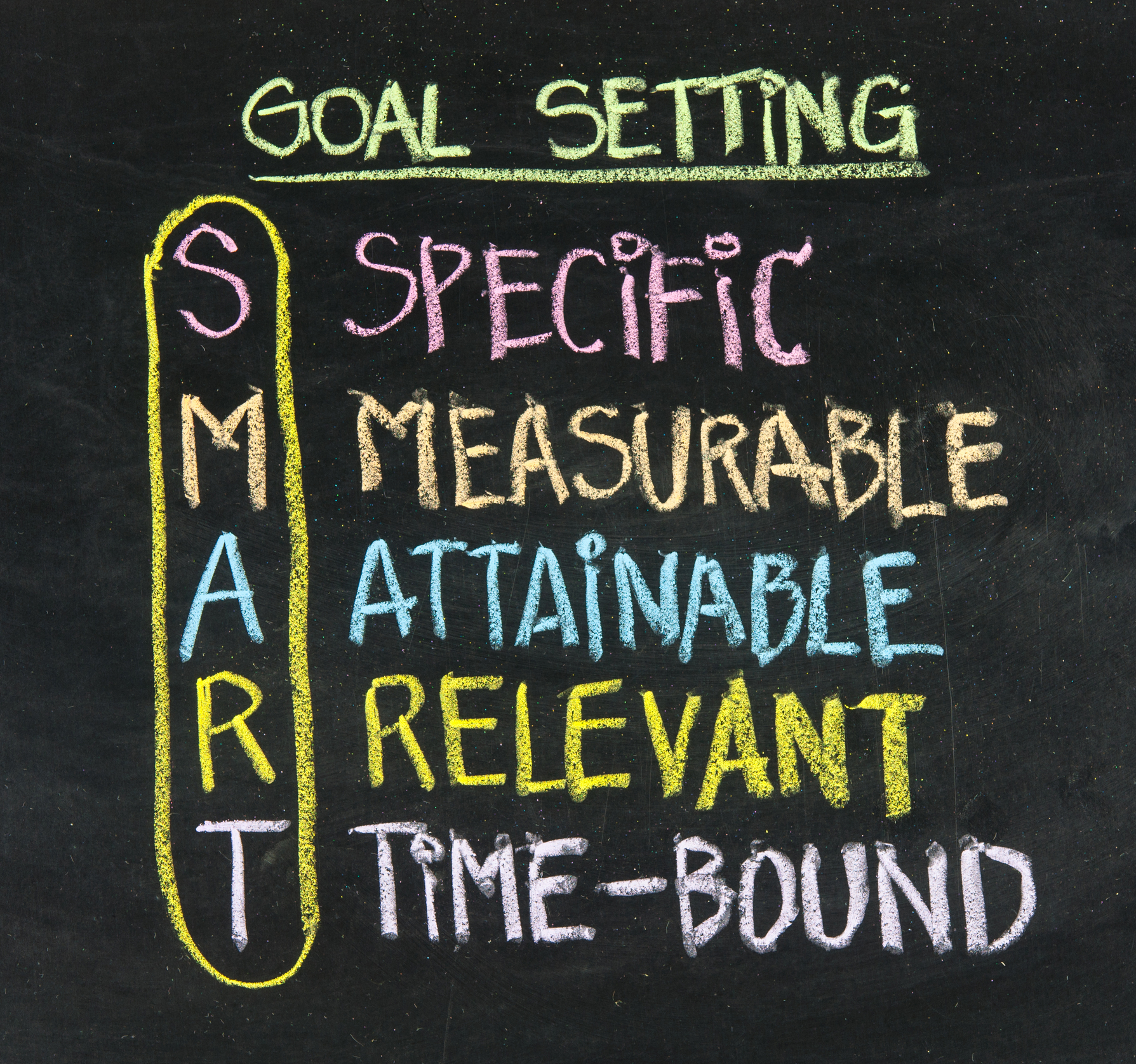As a leader, it is important that you establish goals that are clear and inspiring. You won’t find many successful organizations that aren’t continuously tracking and measuring progress against goals. It’s been demonstrated that these organizations see a dramatic increase in employee and business performance when they effectively set and track goals. However, many of my coaching clients can get confused and feel overwhelmed about their priorities because there are so many goals and they don’t know where to put their best effort. I’ve noticed over the years that when managers help their team delineate between company goals, team goals, individual goals, and individual values the best results happen. All four are important; all four need to be aligned; and all four need to be distinct.
First, some goal setting basics: Individual and team goal setting should be a collaborative process. You’ll build a lot of commitment and buy-in when people are contributing and working together to set the goals. Here’s a quick refresher on the most widely-used S-M-A-R-T goal setting framework that provides a way for everyone to easily measure progress. Goals should be:
- Specific: Determine exactly what is expected, when, and how much.
- Measurable: State detailed, meaningful, and quantifiable numbers that can be answered with a “yes” or “no” when you’re reviewing the progress.
- Attainable: Make sure the goal is achievable, even if people need to stretch a bit. (Big goals are fun to set too, though people get exhausted if all goals are stretch goals.)
- Relevant: Rewarding and also results oriented. Tie goals to the most impactful aspects of the company strategy.
- Time-bound: Provide enough time to achieve the goal, but too much time affects performance in a negative way.
Goal alignment for individuals and teams should be closely tied to the company’s overall strategy. Leaders want to ensure that each person within the organization can see the direction for the business and know how their job fits in with the “Big Picture”. Here are a few steps to make certain you get the best outcomes in the process:
- Clearly communicate the organization’s strategic business objectives across the entire company.
- Allow managers to access and view the goals of other departments so they can support each other and reduce redundancy.
- Make the connection between your team’s goals and your company’s strategic goals.
- Focus individuals’ goals on their teams’ and the company’s most important goals.
- Make sure individuals understand all their responsibilities associated with each of the specific goals as an individual contributor, team member, and employee.
Once you’ve established the three levels of goals, the next step is to create action plans with milestones for larger goals and track the progress on the goals. Regularly tracking the progress on goals through a weekly report and/or check in will determine what assistance or resources might be needed to meet the goals, document the progress of the goals so you’re prepared for future projects and provide content for the employee review process.
Beyond the weekly goal tracking reports, many managers hold short (seven to 20-minute) huddles to align and motivate the team toward their goals. This helps inspire your team members and build commitment toward goals.
As most leaders know, one of the most important factors in goal setting is to have a commitment by individuals to the goals. An effective way to do that is to personally connect an individual’s skills, interests, and values with the desired outcome of the goal. When you can work with individuals to showcase their unique abilities to work toward their company, team and individual goals, you will find people paying more attention to their work, becoming more resilient, and being more productive as a result.

